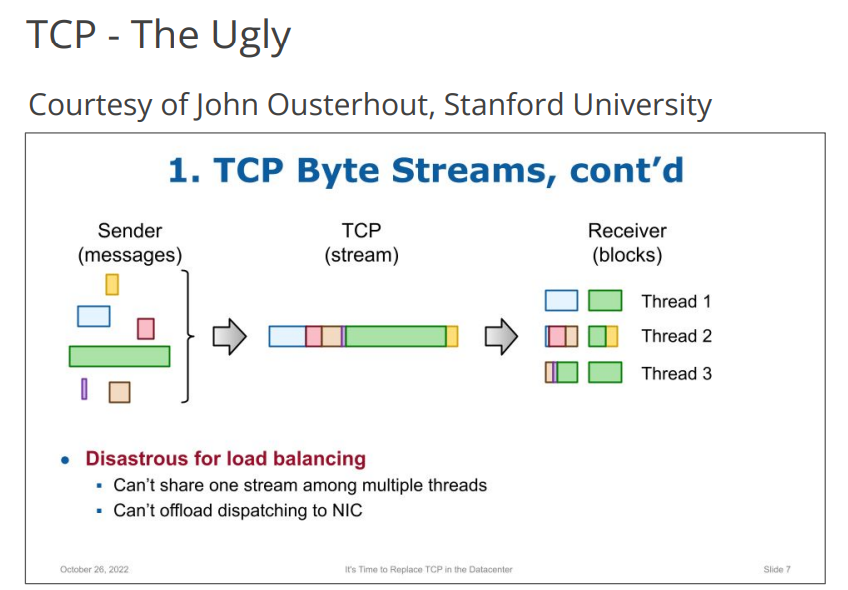Presentation at the Embedded World 2024, Nuremberg, Germany, Apr. 9, 2024

Embedded systems such as in-vehicle networks, modern factory automation or autonomous robots, for example, are undergoing a major shift: Enabled by high-resolution cameras, Radar and Lidar sensors, AI algorithms can implement smartness and ambient awareness, but this need more compute power and higher bandwidth. Industrial and automotive networks must now transport many Gigabits per second, while guaranteeing reliable and secure data delivery, on-time. Thus real-time embedded systems are needed.
TCP, the Transmission Control Protocol, was introduced half a century ago and is a good protocol used almost everywhere in wired or wireless, robotics, factories, vehicles. Unfortunately, TCP has some bad aspects: A significant computational burden. And some outright ugly: Unpredictable tail latency and head-of-line blocking, making real-time behavior difficult.
Our presentation shares quantitative analysis results and presents alternatives: For latency analysis we present benchmarks results from network simulation which show the significant tail latencies for TCP and the undesirable outcomes of TCP’s “not-so-fair” scheduling.
As an alternative we present the Homa protocol from Stanford University. Instead of stream-based connections, Homa is message based and connectionless, which caters better to the needs of modern distributed, microserviced, virtualized embedded architectures. Homa provides significant advantages over TCP when it comes to tail latency and infrastructure efficiency in real-life networks.
To learn more about the details, download the slides below or contact us for more information.
